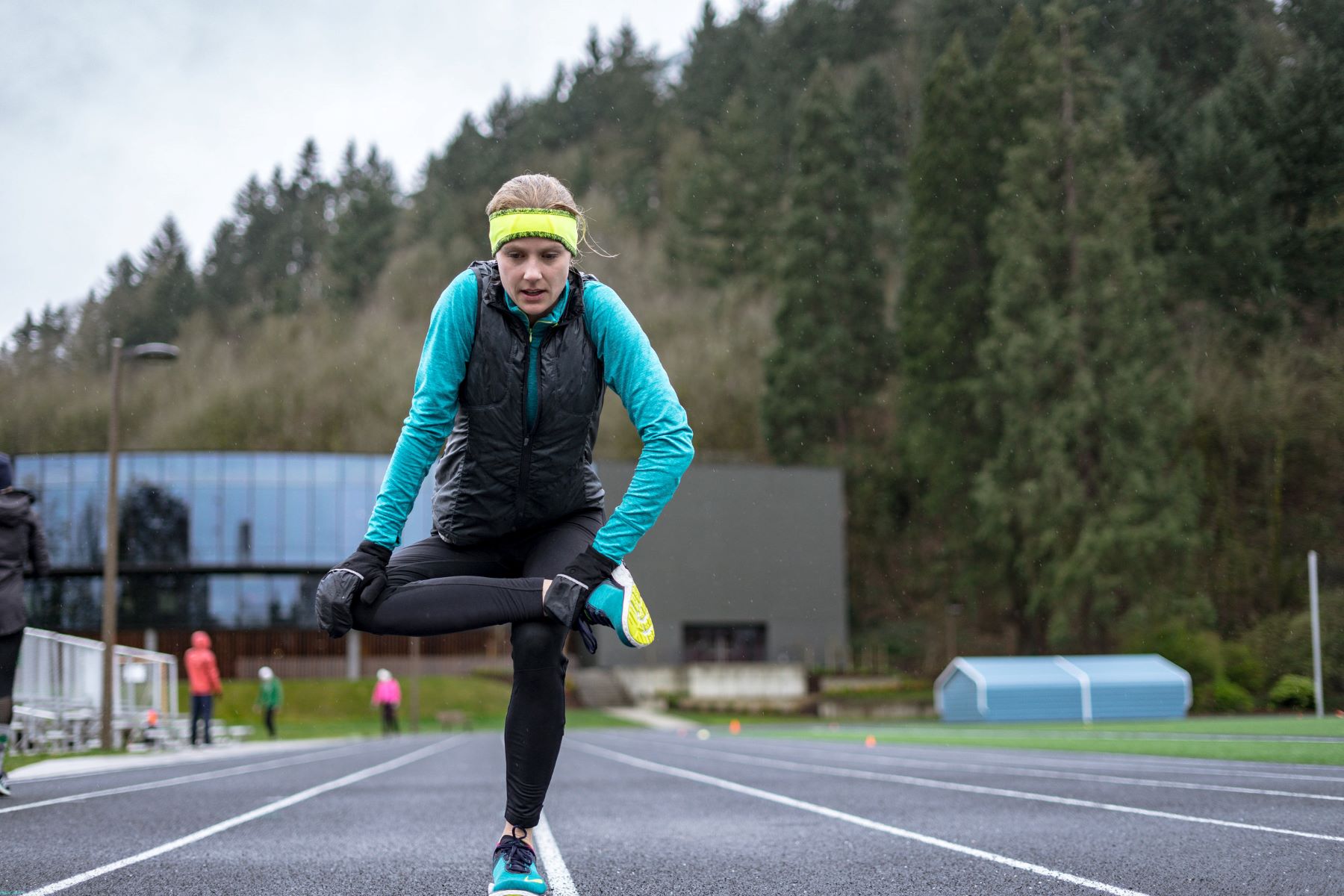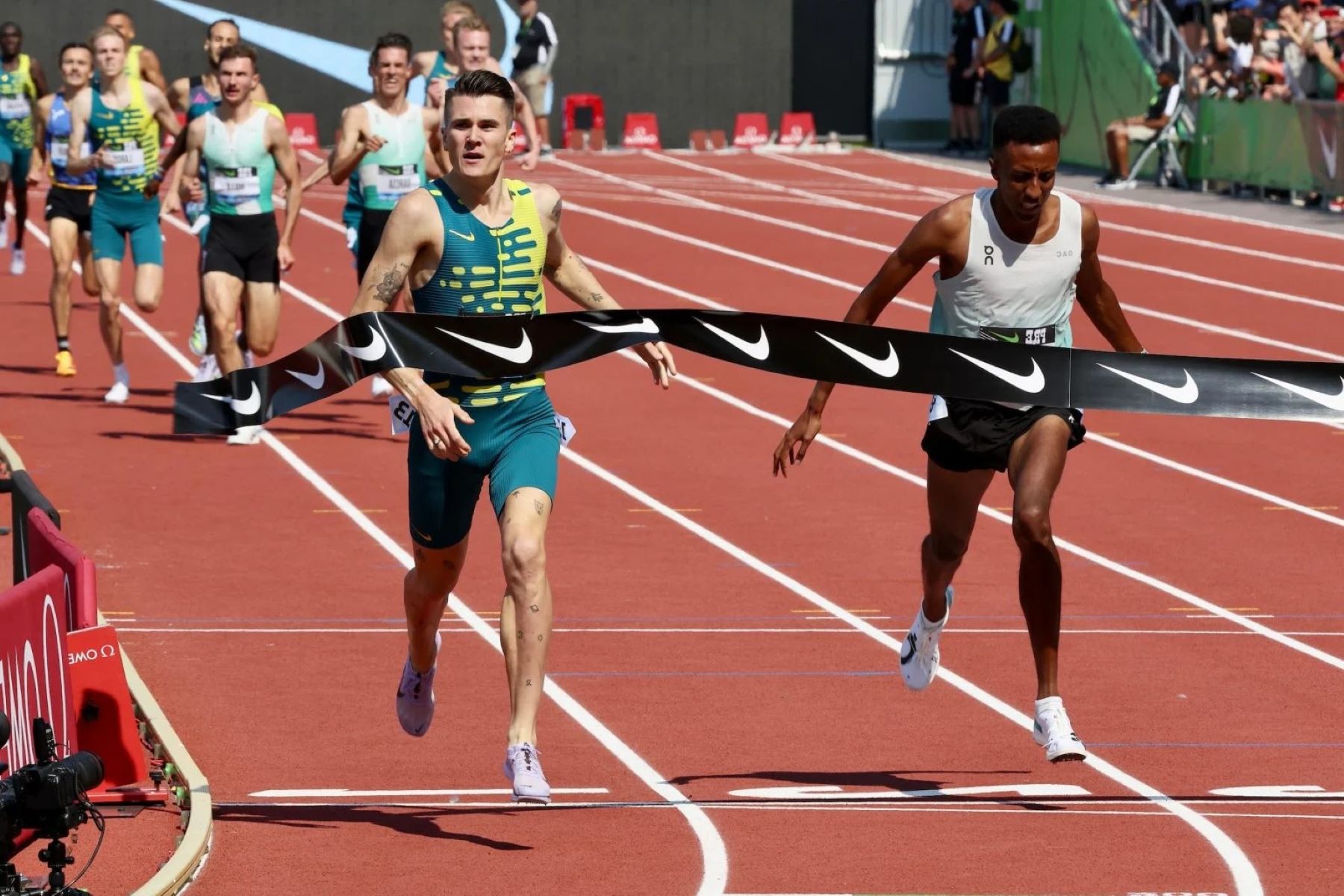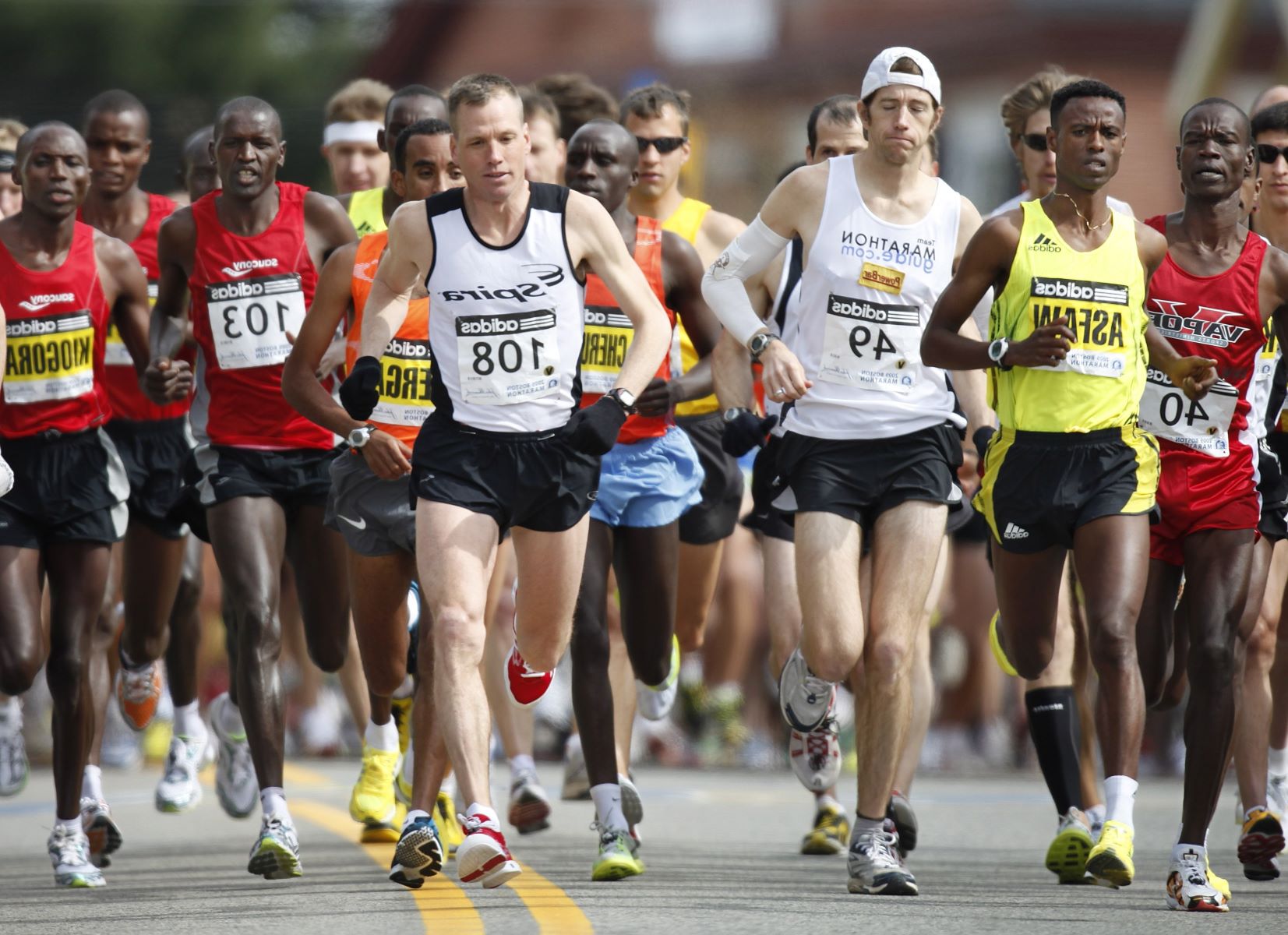Home>Training & Techniques>Cross-Training>Achieve Faster Running With CrossFit Endurance: Optimize Training Efficiency


Cross-Training
Achieve Faster Running With CrossFit Endurance: Optimize Training Efficiency
Published: February 20, 2024
Achieve faster running and optimize training efficiency with CrossFit Endurance, incorporating effective cross-training methods. Discover how to enhance your performance today.
(Many of the links in this article redirect to a specific reviewed product. Your purchase of these products through affiliate links helps to generate commission for Therunningadvisor.com, at no extra cost. Learn more)
Table of Contents
The Science Behind CrossFit Endurance
CrossFit Endurance is a revolutionary approach to running and endurance training that is grounded in scientific principles. At its core, this methodology leverages the concept of high-intensity, functional movements to enhance aerobic capacity and overall performance. By delving into the physiological underpinnings of CrossFit Endurance, we can uncover the scientific rationale behind its effectiveness.
Aerobic Capacity and Mitochondrial Adaptation
A key aspect of CrossFit Endurance is its emphasis on improving aerobic capacity, which is the body's ability to produce energy using oxygen. This is achieved through targeted workouts that elevate heart rate and challenge the cardiovascular system. By consistently engaging in high-intensity interval training (HIIT) and incorporating functional movements, individuals can stimulate mitochondrial adaptation within muscle cells. Mitochondria are the powerhouses of the cell, responsible for generating energy, and their increased density and efficiency contribute to enhanced aerobic performance.
Neuromuscular Efficiency and Running Economy
Another fundamental principle of CrossFit Endurance is the optimization of neuromuscular efficiency, which directly impacts running economy. Through a combination of strength training and dynamic movements, this approach enhances coordination, balance, and muscle recruitment patterns. As a result, runners can achieve greater propulsion with each stride while minimizing energy expenditure. This not only leads to improved speed and endurance but also reduces the risk of injury by promoting biomechanical efficiency.
Hormonal Response and Adaptation
CrossFit Endurance elicits a robust hormonal response that facilitates physiological adaptation. High-intensity workouts trigger the release of growth hormone and testosterone, which are crucial for muscle repair and development. Additionally, the stress placed on the body during training stimulates the production of endorphins, promoting a positive mental state and enhancing pain tolerance. This hormonal interplay contributes to overall resilience and performance gains, enabling athletes to push their limits and surpass previous boundaries.
Metabolic Flexibility and Fat Utilization
Furthermore, CrossFit Endurance promotes metabolic flexibility, allowing the body to efficiently utilize both carbohydrates and fats as energy sources. By engaging in varied training modalities that incorporate sprint intervals, endurance runs, and strength exercises, individuals can enhance their capacity to oxidize fats. This metabolic adaptability is advantageous for long-distance runners, as it delays the onset of fatigue and reduces reliance on glycogen stores, ultimately prolonging endurance capacity.
In essence, the science behind CrossFit Endurance underscores its multifaceted approach to optimizing physiological adaptations, enhancing performance, and fostering resilience. By integrating high-intensity, functional training with the principles of endurance running, this methodology offers a scientifically grounded pathway to unlocking athletic potential and achieving peak performance.
Understanding Training Efficiency
Training efficiency is a pivotal aspect of athletic development, encompassing the strategic utilization of time, resources, and energy to yield maximal performance gains. Within the realm of CrossFit Endurance, comprehending training efficiency is paramount to optimizing the impact of workouts and honing athletic prowess. This entails a holistic perspective that integrates various elements, ranging from workout structure and intensity to recovery protocols and periodization.
At the crux of training efficiency lies the concept of specificity, which dictates that training should closely mirror the demands of the desired activity. In the context of CrossFit Endurance, this translates to tailoring workouts to align with the physiological and biomechanical requirements of running. By incorporating intervals, tempo runs, and strength training that mimic the demands of endurance running, athletes can enhance their capacity to sustain pace, endure fatigue, and conquer varied terrains.
Moreover, training efficiency hinges on the strategic allocation of resources to address individual weaknesses and capitalize on strengths. Through comprehensive assessments and performance evaluations, athletes can identify areas for improvement, whether it pertains to aerobic capacity, muscular strength, or running mechanics. This targeted approach enables the customization of training regimens to address specific needs, thereby optimizing the overall training process.
In the realm of CrossFit Endurance, efficiency is also synonymous with balance. It encompasses the delicate equilibrium between training intensity and recovery, ensuring that athletes push their limits while allowing for adequate rest and regeneration. By implementing structured rest days, incorporating mobility and flexibility work, and prioritizing recovery modalities such as foam rolling and massage, athletes can mitigate the risk of overtraining and optimize adaptation to the rigors of training.
Furthermore, understanding training efficiency entails embracing the concept of progressive overload, wherein the training stimulus is systematically increased to drive continuous adaptation. This entails a gradual escalation of training volume, intensity, or complexity to elicit physiological responses that foster improvement. By adhering to a progressive training framework, athletes can avoid stagnation and continually challenge their bodies to reach new levels of performance.
In essence, comprehending training efficiency within the context of CrossFit Endurance involves a nuanced approach that integrates specificity, individualization, balance, and progressive overload. By embracing these principles, athletes can optimize their training endeavors, elevate their running performance, and unlock their full athletic potential.
Implementing CrossFit Endurance Techniques
Implementing CrossFit Endurance techniques involves a strategic integration of high-intensity, functional movements and targeted running workouts to elicit comprehensive physiological adaptations and enhance athletic performance. This multifaceted approach encompasses a spectrum of training modalities, each designed to fortify specific aspects of endurance running while fostering overall athleticism.
Structured Interval Training
Central to the implementation of CrossFit Endurance techniques is the incorporation of structured interval training. This entails alternating between periods of high-intensity effort and active recovery, effectively challenging the cardiovascular system and enhancing aerobic capacity. By integrating sprint intervals, tempo runs, and hill repeats, athletes can cultivate the ability to sustain elevated speeds and conquer varying terrain, thereby fortifying their endurance running capabilities.
Functional Strength and Power Development
In tandem with interval training, CrossFit Endurance emphasizes the cultivation of functional strength and power. This involves integrating dynamic, multi-joint movements such as squats, deadlifts, and kettlebell swings to bolster muscular endurance and explosive power. By fortifying the musculature essential for running, athletes can enhance their ability to generate propulsive force with each stride, thereby optimizing running economy and overall speed.
Read more: The Impact Of CrossFit On Marathon Training
Running Mechanics and Biomechanical Efficiency
Another pivotal facet of implementing CrossFit Endurance techniques is the focus on refining running mechanics and biomechanical efficiency. Through targeted drills and form-focused exercises, athletes can optimize their gait, stride length, and foot strike patterns, thereby minimizing energy wastage and reducing the risk of injury. This emphasis on biomechanical refinement not only enhances running economy but also fosters resilience, enabling athletes to sustain peak performance over extended distances.
Comprehensive Mobility and Recovery Protocols
Furthermore, the implementation of CrossFit Endurance techniques encompasses comprehensive mobility and recovery protocols. By integrating mobility exercises, foam rolling, and targeted stretching routines, athletes can enhance joint flexibility, mitigate muscular imbalances, and expedite recovery. This holistic approach to recovery not only minimizes the risk of overuse injuries but also ensures that athletes can consistently perform at their peak, thereby maximizing the efficacy of their training endeavors.
In essence, implementing CrossFit Endurance techniques entails a synergistic amalgamation of structured interval training, functional strength development, biomechanical refinement, and comprehensive recovery strategies. By embracing this holistic approach, athletes can fortify their endurance running prowess, elevate their overall athletic performance, and embark on a transformative journey toward peak physicality.
Maximizing Speed and Endurance Gains
Maximizing speed and endurance gains is a fundamental objective within the realm of CrossFit Endurance, encompassing a multifaceted approach that targets physiological adaptations, biomechanical refinement, and strategic training methodologies. This pursuit of enhanced speed and endurance is underpinned by a comprehensive understanding of the intricate interplay between aerobic capacity, muscular strength, and running economy.
Aerobic Capacity and High-Intensity Interval Training
At the core of maximizing speed and endurance gains lies the optimization of aerobic capacity through high-intensity interval training (HIIT). This training modality involves alternating between bursts of maximal effort and periods of active recovery, effectively challenging the cardiovascular system and eliciting profound physiological adaptations. By consistently engaging in HIIT workouts, athletes can enhance their body's ability to utilize oxygen, thereby bolstering their aerobic capacity and fortifying their endurance capabilities.
Read more: Optimal Weekly Strength Training For Runners
Muscular Strength and Power Development
In tandem with aerobic capacity enhancement, maximizing speed and endurance gains necessitates the cultivation of muscular strength and power. CrossFit Endurance emphasizes the integration of functional, multi-joint movements to fortify the musculature essential for running. By incorporating exercises such as squats, lunges, and plyometric drills, athletes can enhance their ability to generate propulsive force with each stride, thereby optimizing running economy and elevating their speed potential.
Biomechanical Refinement and Running Economy
Moreover, the pursuit of speed and endurance gains within CrossFit Endurance entails a concerted focus on biomechanical refinement and running economy. Through targeted drills, form-focused exercises, and gait analysis, athletes can optimize their running mechanics, stride efficiency, and foot strike patterns. This biomechanical precision minimizes energy wastage, reduces ground contact time, and fosters a more fluid and efficient running style, ultimately translating to enhanced speed and prolonged endurance capacity.
Comprehensive Recovery and Regeneration
Furthermore, the maximization of speed and endurance gains is intricately linked to comprehensive recovery and regeneration strategies. By prioritizing adequate rest, incorporating mobility work, and embracing recovery modalities such as foam rolling and massage, athletes can mitigate the risk of overuse injuries and ensure optimal readiness for subsequent training sessions. This holistic approach to recovery not only fosters physical resilience but also enables athletes to consistently perform at their peak, thereby maximizing the efficacy of their speed and endurance-focused training endeavors.
In essence, the pursuit of maximizing speed and endurance gains within the framework of CrossFit Endurance embodies a holistic and integrative approach that encompasses aerobic capacity enhancement, muscular strength development, biomechanical refinement, and comprehensive recovery strategies. By embracing this multifaceted methodology, athletes can unlock their full speed and endurance potential, elevate their overall athletic performance, and embark on a transformative journey toward peak physicality.
Overcoming Common Running Plateaus with CrossFit Integration
Plateaus are a common challenge encountered by runners, characterized by a stagnation in performance despite consistent training efforts. This phenomenon often stems from the body's adaptation to repetitive stimuli, leading to diminished physiological responses and hindered progress. However, with the integration of CrossFit principles into running regimens, athletes can effectively surmount these plateaus and reignite their progression toward peak performance.
Diversification of Training Stimuli
One of the primary mechanisms through which CrossFit integration combats running plateaus is the diversification of training stimuli. Traditional running routines, while beneficial, can lead to a plateau due to the repetitive nature of the activity. By incorporating CrossFit workouts that encompass varied movements, intensities, and modalities, athletes can introduce novel challenges to their bodies, thereby circumventing the stagnation associated with running plateaus. This diversification not only reinvigorates physiological adaptations but also fosters overall athleticism, contributing to enhanced running performance.
Enhanced Muscular Strength and Power
CrossFit integration augments running performance by emphasizing the development of muscular strength and power, which are pivotal for surmounting plateaus. By engaging in functional, multi-joint movements and resistance training, athletes can fortify the musculature essential for running, thereby enhancing their ability to generate propulsive force and endure the demands of prolonged runs. This heightened muscular prowess not only mitigates the risk of plateaus but also elevates overall running performance, enabling athletes to conquer new milestones and surpass previous limitations.
Optimization of Aerobic Capacity
Another notable facet of CrossFit integration in overcoming running plateaus lies in the optimization of aerobic capacity. CrossFit workouts, characterized by high-intensity interval training and metabolic conditioning, elicit profound cardiovascular adaptations that transcend traditional running routines. By challenging the body through varied intensities and work-to-rest ratios, athletes can enhance their aerobic capacity, thereby breaking through plateaus and elevating their endurance thresholds. This comprehensive approach to aerobic development reinvigorates physiological responses, propelling athletes toward newfound performance peaks.
Biomechanical Refinement and Injury Prevention
Moreover, CrossFit integration addresses running plateaus by focusing on biomechanical refinement and injury prevention. By incorporating dynamic movements, strength exercises, and mobility drills, athletes can rectify muscular imbalances, optimize running mechanics, and mitigate the risk of overuse injuries. This holistic approach not only fosters resilience but also circumvents the setbacks associated with plateaus, ensuring consistent progress and sustained performance gains.
In essence, the integration of CrossFit principles into running regimens serves as a transformative strategy for overcoming common plateaus. By diversifying training stimuli, enhancing muscular strength and power, optimizing aerobic capacity, and prioritizing biomechanical refinement, athletes can transcend stagnation and propel themselves toward continuous improvement and peak running performance.












